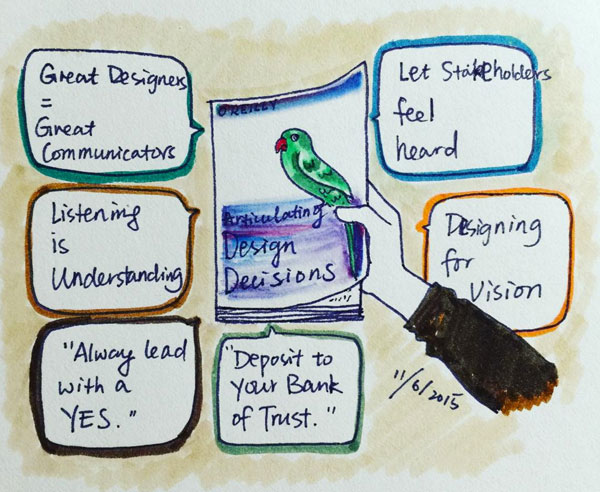Today, I wrapped up last bit of the great book “Articulate Design Decisions“, written by Tom Greever . It’s a great guidebook for designers, leading them to become great.
I can’t say enough how much this book helped me to think hard on how I can get my designs communicated to everyone else. I took my time, literally several months, to read it, digest it and apply the principles. I wrote many lines and comments on each page — this is a book that I took most seriously these years, because I know how important it is for me to be able to articulate my design decisions. I’ll come back to it again to recharge.
Highly recommend it to any designer. It will help you push yourself to the next level.
I doodled and took notes as I read this book, as below:
Prepare for a Design Review Meeting
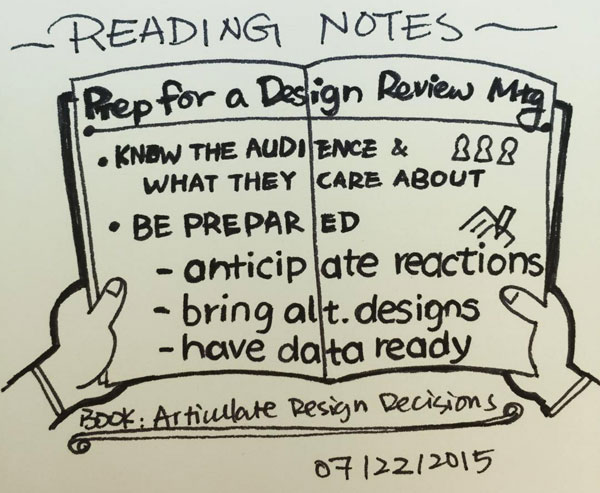
The book gives the “why” and “how” that designers can use to explain their designs to different audiences, like executives, developers, and other stakeholders. Super useful for designers. I’m still less than half into this book but I’m amazed how much I’ve learned.
I understand that this knowledge is still floating somewhere in my brains though until I put it into practice. Confucius said: “I hear and I forget. I see and I remember. I do and I #understand.”
In this chapter, it’s about holding a design review meeting and how to get everyone’s consent on the designs. First, you need to be prepared, know what each attendee cares about, the goal is to make the most out of this meeting for them. Second, write down possible questions and objections they can bring up, think about your responses; keep all the design ideas with you, show alternatives when present; have data available, present only when it’s necessary.
Become a Better Listener
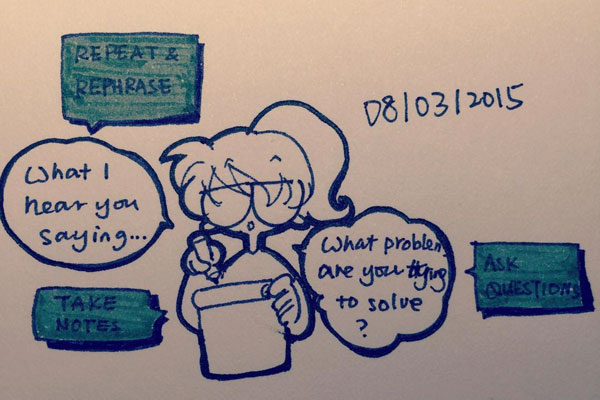
How to become a better listener:
- Take better notes (accessible in teams, organized with agenda items, specific on what/who/why, capture definitive/clear decisions, actionable items, references, forward-looking for next meeting);
- Ask questions, let people express themselves, e.g. “What problem are you trying to solve”, “What do you suggest”, “Why is it better”, “How will this affect our goals”, “Where have you seen this before”
- Rephrase, turn “likes” to “works”, focus on solving problems, rather than discussing stakeholders’ personal opinions, understand the core issues, we’re solving problems for the users.
- Repeat “What I hear you saying” to confirm that we’re on the same page, repeating back with correct design terminology.
Lead with a Yes
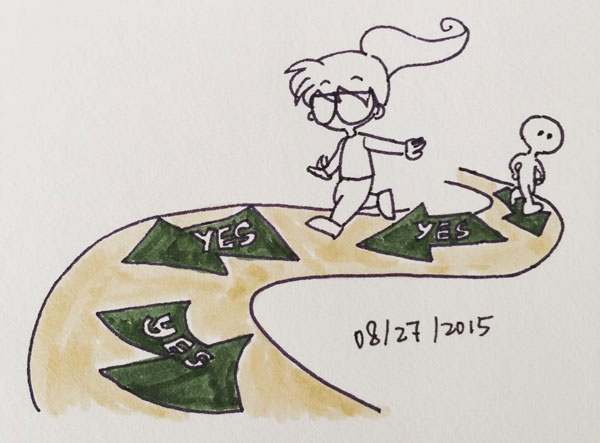
Learning about developing my “yes reflex” and lead others with a “yes”. The purpose of this is to pave a way for every one in the team to work together towards the best solution, rather than discussing who’s wrong. It also allows us to find opportunities to agree with each other, react positively to each other’s ideas.
This requires us to be open to ideas, instead of defending our own ideas — even we are not sure whether they will work or not, be open to them first and figure out later. It also opens the doors to others, now we can invite the people who contribute their ideas to take the responsibilities.
However, always saying “yes” doesn’t mean that you’ll implement every single idea they suggest. A yes will win us more time to consider those ideas and weigh the constraints and limitations. Sometimes, stakeholders just need a “yes” from us to prove that we value their input.
The Art of Charm
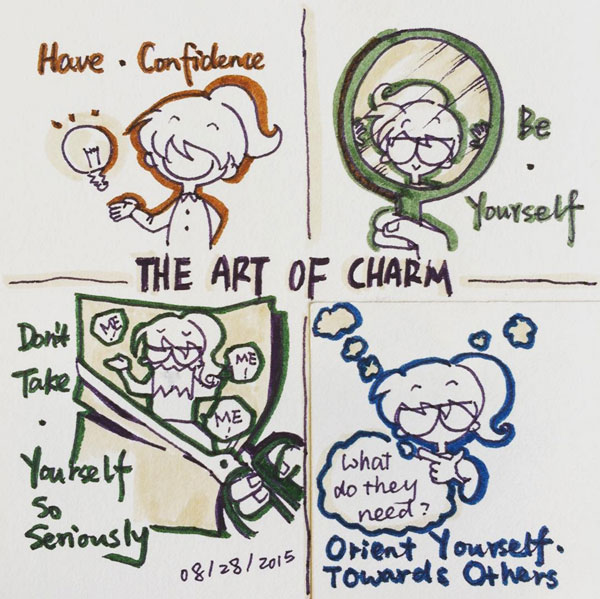
In presentations for design meetings and other occasions, we want to put us and other people on a path towards mutual benefits, thus, we want to present our best qualities as well as demonstrates an earnest effort to show an interest in helping the other person. In other words, be charming.
Four great ways to do this:
- Have Confidence – we got our jobs for a reason, so believe in our skills and expertise to solve difficult problems. Putting up a big nice smile shows our confidence and helps others to build up theirs in us.
- Be Yourself. We are at our best when we are ourselves, that also helps others to relax. Each of us has a unique way of winning people over, just act as normal.
- Don’t Take Yourself So Seriously. Relax, most deciscions are not life or death. Put aside “getting things done” mentality when trying to get others to agree with us. Be human. Be likeable. Be humorous. Have fun.
- Orient Yourself Towards Others. Make someone feel as if they are the most important person in the world. Check our ego at the door before step into a meeting. Figure out what they need to hear in order to agree with us. This helps us to focus on the most important things that we can work together to accomplish.
Respond to Feedback
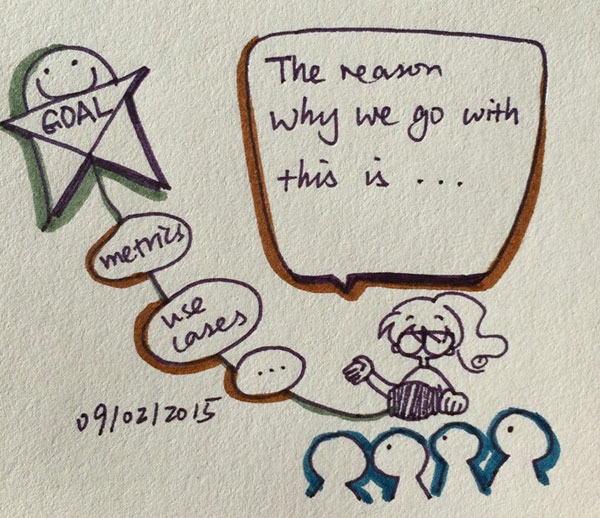
Remember the original intent; always attempt to attach decisions to a goal, metric or other problem that I’m solving. The decisions should reflect these objectives that the stakeholders have agreed upon. If there are no objectives, write down and clarify to them when present. It’s also easier to move on if people get stuck on something that doesn’t help to achieve the goals.
